Loving all the wildlife
around us, we couldn’t wait to see this part of the world. Kuching, our port of entry, the capital of
Sarawak and known as the City of
Houses on stilts and many pot plants in the colorful
The village nearby has a few small
shops, one or two eateries and friendly people. The people of a private house
with a jetty let us use their landing and water and we could have our laundry
done for 2RM a kg. There were
Santubong in the rain.
Market ware: Layercake in unappetizing colors and
intricate patterns next to the tools for negotiating the jungle and its
produce.
Shopping near the waterfront of Kuching.
Except for clearing in and
out, we seldom went in town. Just once or twice to go to the colorful weekend
market, where the best layer cake (picture left) was sold amongst many other things
like handicrafts, clothing, traditional knives and tools and of course the
usual fruits and veggies. And to see the textile museum, a dark little place,
but ok. Another time we visited the cat museum. Which was just a collection of
pictures and statues with a few stories, not bad, but only good for cat-lovers.
The imposant building on the
left houses the cat museum, on the right a painting by a local artist. Cats are
highly regarded, but the average street spec. looks like any other, with the
usually knotted tail and slit eyes.
Killing a cat in Kuching however,
can get you a fine of RM300 (60 euro)
And that is a lot of money here!
It wasn’t only sightseeing, we had work to do onboard. The dirty fuel tank that had caused us problems on the trip from Johor had to be cleaned and new fuel filters were needed. Jaap walked all over Kuching, but couldn’t find any for our Yanmar. The answer to this problem came from Anne-Marie, a friend in Langkawi. This busy lady, the manager of Dev’s Adventure tours, was about to go on a well deserved holiday but managed to get hold of some and send them to us within a few days. Thank you Anne-Marie. How could we possibly stay out of trouble without helpful people like you!
Downtown Kuching, view of the pink Kuching Mosque
Materials in all bright colors for the muslim ladies on the left the new government building on the right.
Other yachts came sailing in.
Many were part of a rally, others came for the Rainforest Music Festival, most
did both. We certainly wanted to hang around for this 3 day festival of ethnic
music where skilled musicians from many countries played various traditional
instruments and held workshops and jam sessions. We saw 7 groups performing and
listened to traditional Borneo music, played on the sapi, a string instrument
made of bamboo, Indonesion gamelan, Korean drums, (very good!) Chinese chamber
music, like Japanese goto, French gypsy band Poum Tchack and the topper: The Saint
Nicholas Orchestra from
Batik artist at the Rainforest Music Festival.
The stages were set up in the cultural village, an interesting place worth visiting anytime. There were many food stalls serving local dishes and good handicraft exhibitions. Even the weather provided the right rainforest feeling, but we were not discouraged and huddled under raincoats and umbrellas.
Somehow through the grapevine
one Dutch physical therapist heard about the other and so we met Caroline from
Terneuzen and her family: Husband Chris, a local M.D. and kids Tim, Kim and
Didier. They took us out in their spare free time, to see caves and some remote
kampongs or longhouses.
A longhouse consists of many houses lined up under one long roof, all facing a communal room, like a covered veranda. Traditionally they are built along rivers and occupied by the river people: the Iban tribe. In the old head-hunters days there were 2 major tribes, the land- and the sea dayaks. The Iban are descendents from the first one and are little farmers who grow rice, vegetables and fruit. Very peaceful, but a collection of skulls in an old storage room speak of different times.
The long communal veranda is where people meet to socialize and do their jobs.
Simuti Longhouse looks more like a kampong (village)
on top of a mountain. Deep in the interior, near the border of
The many steps down, too many for the elderly.
This was a very nice
opportunity for us to see the interior of
People going about their work (harvesting rice, making tools, drying tapioca, gathering vegetables AND hauling it all up hill, barefoot, in huge baskets like the lady on the right.
Awesome basketry and even more awesome loads.
Walkways and platforms of bamboo keep everything free of dust and sandflies.
Another Dutchman, Jan from Otterloo and his wife and daughter came along as well, his wife being from this area and they too came and went like family friends. How wonderful it was to be with them! What we saw was so special. People doing their daily jobs as usual, a bit shy and not eagerly posing for the camera, as in the Annah Rais Longhouse, where we stopped on the way back and which is set-up for tourists, with a parking lot for tour busses and a ticket counter.
Skulls in a cupboard at Anna Rias get a lot of tourists’ attention.
And here we all are: Jaap in the middle and from there clockwise: Caroline, Timothy, Kimberly, Didier, Tanja, Jan, Linda and Chris.
Another day Caroline picked us up to go to Bau, a small rural town where Chris has his clinic. From there it was not far to the Fairy and Windy caves, one an enormous chamber in a limestone formation, the other a tunnel-type, where swallows and bats fly in and out when you come at the end of the day. Both were very special, even for Jaap who doesn’t like narrow caves much.
We (mainly Marijke and the kids) found all sorts of cave-dwelling creatures and small skeletons, thinking up stories of imaginary ghosts amongst the many limestone shapes and structures.
A swiftlet on a nest, not edible, lucky for her.
Bats, bats and more bats. Oh, they stink!
And that was another great day. Thank you so much for showing us this.
Last, but not least: the
The big alpha male that dominates the area is known to come in regularly, more to show off his muscular power to some baby-carrying females who like to hang around this take-away outlet, I think. The day we were there he didn’t show up. Too bad, but then the mothers were more relaxed and had ample time to play with their young ones.
This one clinging to Mum is only 4 months old.
Some teenagers were there too, male and female, not old enough yet to be sexually active and take part in the game of dominance.
We saw about 8 apes in the morning, went for a hike afterwards and hung around for the afternoon feeding session, but none showed up for that and the fruit was taken by cheeky squirrels and flower-peckers.
At the end of the day Jan and Linda came to collect us with their car, take us to their house for a meal and drop us of at Santubong. Thank you!
Too bad we didn’t see any dolphins the night Jan and his ladies came to visit. But look at the evening sky!
All you friends at Kuching
made our time quite special. Chris and Caroline, we admire you for what you’re
doing, the time you spend helping the locals, your care and energy that is
literally getting people back on their feet. Keep it up, but take care!!! We
hope to see you during your holiday in
Farewell Kuching
Kuching Wildlife
The mudskippers of Santubong
Chased by a Dog-faced Watersnake and bright blue crabs.
Butterflies and dragonflies everywhere
Pitcher Plants found in the bush at the edge of the jungle
Other critters
And some birds of course
Black-headed Munia
Olive-backed Sunbird at its nest with chicks
Swifts nesting under a house
Ashy Tailorbird
Never saw so many Wood Swallows
Two different Drongos acting like a pair?!
A raptor hovering over Semenggoh.
The
With the rally gone and the
music festival over most yachts had moved on and we too started to get ready
for the next leg. Another couple with the same plans decided to heave anchor
the same day and thus the 2 boats, ALISHAN and SILENT WISH left Santubong together.
Now, this was new to us: buddy boating with another yacht. And a DUTCH yacht at
that…
We wanted to go up a long river, the Rajang, as far as Sibu, 160 km inland. From there on our masts would restrict us, but we could take a ferry for another 85 km as far as Kapit, a small town that is only accessible by river. It made sense to travel together. We could easily get stuck on uncharted mud banks or some of the floating debris could get in our propellers and with the strong currents you’d be grateful for a helping hand.
Long house on the Rajang River
Armed with good advice and the coordinates of safe anchorages from other yachts we made our way north. The first stop was behind Lakei Island, part of Bako National Park, where we hoped to – and did – spot the probiscis monkeys. Funny guys with huge noses, aptly named Orang Belanda. (Dutch man) We also sighted a Stork-billed Kingfisher, big and tremendously colorful. Others, like the Collared Kingfisher we saw here almost daily, but this beauty was a first.
Sorry, no photos of these two, but there were lots of pitcher plants, different ones again, and magnificent butterflies
Tailed Jay & Village Archduke
2 Days later we continued along the coast of Sarawak towards the entrance of the Rajang. We made it just before sunset and dropped the hook a mile upriver. There was a lot of traffic coming down, like the current flushed them out, but we were safe just outside the main channel. The next day was a beautiful day. The tidal current started pushing us in from the morning. We would not do much (if any) sailing in the narrow channels, the river was quite wide, but mostly shallow. So it would be all motoring and a current in the right direction was a bonus. With binoculars and cameras at hand we sat in the cockpit, ready to enjoy the scenery.
At first both shores were lined with mangrove type shrub, but soon we started seeing clearings and loads of timber. Most of the timber was piled around roofed-over storages that held more logs. One company after the other, harboring mountains of tree trunks, waiting to be transported, smoke spewing chimneys around every bend.
Lots of brick chimneys as on the left. They were generally not in use.
What a sore sight. At the end of the day we wondered when we’d get to see a bit of jungle and if there was any left. Ship loads of timber sailed by. The biggest transports were just floating logs tied together, pulled by tugs, sometimes 3 at the time. Seeing them coming around the corner our mouths dropped open.
And what was there behind the shoreline? Oil palm plantations. For miles and miles. Wonderful, this green bio fuel! What happened to the respect for Mother Nature?
This first day on the river was a bit depressing, but when we reached the little town Sarikei our moods changed. The pineapple kingdom of Borneo, it sported good markets, good Chinese eateries and a music shop that sold all our favorites! We anchored off some stilt houses, where people smiled, waved and watched us, (wile we watched them) sitting in their windows, handling a fishing line or a net.
View from the cockpit.
A collection of cultures: Tribe’s people, descendants of the headhunters, living in ampong houses (left). Chinese, mostly businessmen with shops or in the timber trade. And Malay muslims, like these young ladies coming off the ferry (right) on their way to college.
Sarikei waterfront
We hauled the bike ashore and
Marijke peddled off in the early morning to a pocket of forgotten trees. It
seemed all he birds in the area had found a sanctuary there. There I saw my
first Malkoha’s up close. (scroll down)
The Sunday market at 5:00 am
held several surprises, even for us! How many countries, how many markets have
we explored? Sarikei was special!
Farmers from way up country gather to sell their wares at the Sunday market. They come by boat down the Sarikei river, to where it meets the Rajang.
Orange cooking bananas.
Life poultry is wrapped in newspapers, string attached, easy to carry.
July 20th 1984 – 2009: 25 years on the way!
A small celebration was due. On July 20th 1894 we checked out of the Netherlands on our 30ft steel JAN HARING. 25 years later and we still haven’t circumnavigated… THAT’s worth a party.
Ellen and Jits came over with coffee, cake and slagroom! Thank you guys for sharing this moment with us!
Furher upstream the scenery changed. The river was narrower and the shores were now lined with Nipa palms. Still not junglish, but better. It was only half a day motoring to the next town, Bintangor, were we didn’t stop. Instead we took a turn up a side arm, the river Tulai. Here we found a selection of longhouses right at the point where the river became too shallow to continue. The banks were closer now and straight ahead some big trees could be seen overhanging, touching canopies. This was more like it! We dropped anchors and went ashore to pay respects to chiefs and then rode the dingy further in.
s/y ALISHAN and SILENT WISH in Sungai Tulai
This place had seen other visiting yachts, after s/y Crystal Blue had made it their home for a number of months 2 years previously. Their website was full of useful info and hence we felt no qualms about coming this far. What a surprise when one of the longhouses invited us to join their last harvest feast the following day!
Iban people, as all other Orang Ulu (river tribes) are fishermen and using casting nets they catch beautiful freshwater crayfish.
Great, a party! But what
should we do? What was expected from us? We had read “Into the Heart of Borneo”
by Redmond O’Hanlon. It’s the story of 2 British men traveling up the Rajang River
in search of the Borneo Rhinoceros and staying at Iban longhouse somes 30 years
before. We figured that although much of the jungle was gone, the customs of
the Iban people would not have changed much. We got ready to dance and sing.
And that’s what we did. The
first part of the evening was filled with local popular music, karaoke and a
kind of line dance. We were seated in the long communal room with plates full
of local dishes. Tuak, a sweet homebrew of rice wine was going round in
abundance and our cups were kept full. Jits of Silent Wish sang an Eric Clapton
classic and Ellen, Jaap and Marijke danced the traditional line dance. Most of
the young people spoke English, but this dance was a way to interact with the
ones that couldn’t. And that was a lot of fun.
After 3 or 4 hours we felt
quite tired and got ready to leave, but were told we couldn’t. We had to wait
till the main ceremony that involved a decorated banana tree on the other side
of the long room was over. So we sat down and waited.
Just as well, I would not have wanted to miss this. Around midnight the karaoke stopped. The elderly took seats near the banana tree and started playing Iban music on traditional instruments. They beat their drums, gongs, turtle shells and something that sounded a bit like Indonesian gamelan, but more primal. After hours of quietly watching the crowd sing and dance, they came alive to play their part. Their faces lit up and became quite expressive. They laughed amongst themselves and looked happy, playing these ethnic tunes with a complicated rhythm.
The chief started a sword dance around the tree and when he cut off some part of the decoration, the next high ranking person took turn. This was followed by another one and another and it didn’t seem to end, with the same tunes being played over and over, so after what we thought was a polite time we got up to leave again. But no, in vain. We had no choice, but to sit it out till the end, which came eventually when someone else had enough and ended his dance with cutting down the whole tree. We applauded and felt like we’d worked hard at the harvest ourselves.
The dancing chief
We left the day after the feast, worked our way back to the Rajang river and continued upstream, against the current.
This area has funny tides.
Twice a day, one small and short, the other big and long. Now more then 100 km
inland, we had left salty sea water far behind us. Around us it was all fresh,
however muddy. Still, we had currents running both ways, up river and down. At
the lowest tide the water nearly all ran out of the Sungai (river) Tulai, which
had us sleep with the cockpit in the bush among the fireflies at night.
Apparently, every high tide, the body of salty seawater runs in and pushes the mass of fresh water upstream, which in its turn streams back at low tide, thus creating currents, stronger than the river flow. And so we didn’t get to Sibu, our last town, before dark. We just spend the night a few miles short, around one of many bends and postponed our arrival till next morning.
We were told this small city with mostly Chinese inhabitants, has the highest number of millionaires per capita in East Malaysia. Typical Chinese not to change their way of living. Except for 2 or 3 modern high rises and a church, the houses look just as poor as 100 years ago. For us the most interesting building was 115 year old the Chinese temple at the quay.
It’s easy to see its importance, situated on a junction of major rivers and thus another town where the jungle tribes congregate to do their trading. They camp all around the 2 markets, one wet, the other dry.
Hand made hats and jungle vegetables. Young ferns tasted best.
Loads of dried fish
And of course more packages of lifestock
We found several machine
shops and hardware stores in town and a mall with a camera shop where we could
buy a replacement for the coolpix that had died the week before. Jaap hunted
for fuel filters again. The engine and the fuel tanks were behaving well, but
we want to be prepared.
We didn’t make the trip to Kapit, the town at the end of the river. We didn’t feel like sitting in a noise banana (also known as river ferry, the only way of transport up there) for 3-4 hours, walking around a bit and doing the same on the way back. Instead we took a bus and got a little further upriver, as far as Kanowit. Good enough. Kanowit looked pretty, but didn’t have much to offer. We did confirm the existence of the low bridge just up from Sibu, so couldn’t help but turn around.
The gate to a Chinese temple and some town houses at Kanowit.
Another Dutch sailboat, the Alk with Hans and Marijke had followed us up the river and we agreed to meet at a junction, 10 miles down from Sibu. They came from Sarikei and the 3 of us would proceed via another river arm towards a town called Daro. However, those strange currents… again we didn’t make it before dark. This time we dropped anchor behind a shallow bank in front of some jetties.
The next morning we decided to go ashore to take a look and found Kampong Semop, a lovely Malay village, with jetties instead of roads and houses on stilts. The people were very surprised and really happy to see us. I don’t think any yacht had ever been here.
We could hardly conduct our walk between the neat houses and yards full of flowers, (many orchids!) hens, goats, pets and little boatyards, as we were constantly stopped and offered drinks or food. We all agreed we should give this pretty place more time and stayed another day.
Old people might have difficulties walking, but sitting on a bamboo floor for hours, making hats or baskets seems no problem.
We were taken on an excursion to a new palm oil plant nearby, Learned what there is to learn and felt sad about the future of the river delta. But I guess it all looks quite different when you live here and have to earn a living for you and your family.
When we left Semop it was only a short hop to Daro, a town marked on our charts as the last town down the river. There was a channel leading in that looked quite negotiable at high tide. The Alk ventured in while we waited outside. Just as well they didn’t stay too long. At dusk the water raced out, leaving very little in the town basin, as we discovered when we took the dinghies in. He could have sat in the mud all night.
The channel to Daro town at low tide.
By now it was the beginning
of August and suddenly things changed. The sun was bleak, the sky brownish, our
visibility gone. Everywhere around us the peat swamps burned.
These enormous fires are started every year to develop the land and make it ready for agriculture, or more likely for oil palms plantations nowadays. But it’s hard to control them and they burn for days or weeks, till a major down pore extinguishes them.
A fishing boat on our course that didn’t come into view until 500m off.
It was time to leave the river. We were tired of motoring everyday and needed a good days’ sail. We took our time in the morning, knowing it paid to wait for the right tide. Our next leg was an overnighter, around 80 miles to a city on the coast called Bintulu. So the 3 yachts sailed on this beautiful day, with gentle winds, enough for our spinnakers, which we, in a very un-ALISHAN way, left up till midnight.
Bintulu was nothing but a
place to drop anchor and get some sleep. Yachts had enjoyed pleasant stays here
for many years, according to an old guestbook, but since new harbors were built
we were allotted to an out of the way corner that gave us no protection against
the prevailing SW wind, no dinghy landing and no possibility to go ashore.
At night suddenly Jaap got
up. He smelled fire! And this time not from the shore.
Our fuses had popped, we had no light, but in the dark we could sense and smell some smoke. Where was this coming from??? Obviously something electrical. Logical thinking got us at the back of a panel behind a 12V connection.
A curled up piece of wiring was melted and caused the shortcut. It hadn’t burned any of the wood - yet. But we were shocked by the sense how easy this can happen and how dangerous, specially at sea!
We continued the following
day, another overnighter to the next town: Miri. When we got there in the
morning we had no visibility thanks to those swampfires and needed all our
equipment: GPS, Maxsea and radar to find the entrance. It wasn’t a problem,
but…
HOW DID WE DO THIS IN THE OLD
DAYS??
Rajang Wildlife
Chestnut-breasted Malkohas (Sarikei)
I cannot find this butterfly in my new Borneo
Butterfly book...
Must be rare. (Sg Tulai)
2 Woodpeckers, the Buff-umped and the Sunda
Pygmy
(Sg Tulai)
Red-eyed Bulbul on a banana leaf (Sarikei)
Crimson Flowerpecker and Black-winged Flycatcher-shrike (Sarikei)
The Dusky Munia is endemic in Borneo
Gold-whiskered Barbet at nest and lilies that look like orchids (Sarikei)
West Viscount (Lakei Island)
A family of Flowerpeckers (Orange-bellied) feasting on a custard apple (Sarikei)
One of many colorful hoppers around Sarikei
Green pigeons, the Thick-billed above and the Cinnamon-headed below (Iulai River)
Oriental White-eyes in love. (Semop)
Some shots around Semop
Pitcherplants of Lakei Island
Pandanus and Nipa palm fruit
A Red-spotted Duke, (Lakei Island)
Bugs and a bit of pepper in between, a Thai would call it a meal.
Somebody seems to like the smell of fishing nets
Wild orchids on the Tulai River
MIRI, BRUNEI and LABUAN
Miri to Labuan
After 6 weeks on anchor it’s nice to stay in a marina again, even when there are no showers, toilet nor swimming pool, while the price of Miri Marina is in the same league as Sebana Cove, Penang City and Rebak. Being Dutch I should be able to come up with the exact amounts, but I forgot. The town of Miri is nearby, which is nice, and for us there was another reason we liked it: the Hash House Harriers. This organization of runners and drinkers, drinkers with a running problem, as they say, originated in Malaysia as a stress outlet for ex-pats. We always thought we should join once, as a cultural experience. The running part appealed, but with Jaap not touching any alcohol, the drinking part didn’t. However, we wanted to give it a try and here was our chance.
An evening on the dock with Jits, Ellen of s/y SILENT WISH,
Hans and his wife Marijke of s/y ALK
Jaap contacted Wim the GM, a man from Holland working for Shell, who came to collect us one afternoon. He drove us out of town to a bit of jungle and soon we were sent off to follow the paper strips. And there we went, into that primary jungle with 50 others. No trail, no path, everybody just dove in. I’m glad he’d told us to wear long sleeves and pants, (In this heat, this humidity?? Yes!) As a virgin you just follow somebody and hope he/she has the same speed. But our feet aren’t used to jungle and we always ran on flat ground. This was different. Not much running. More jumping, sliding, wading, stumbling up and down. Often on all fours. Getting to the end as fast as you can, because it’s the end of the day and darkness falls soon. And then???!!! We heard it happened regularly that people lost track and had to spend the night in there. Wow, not me! And I ran.
Dusk in the jungle Lambir National Park
We came out in one piece and this was the start of a series of fun runs and heaps of very dirty laundry. I heard every city is different, some have rough parties, Miri has a reputation for tough runs. The inauguration wasn’t that bad; Jaap was allowed to drink the local sports juice and we met some real nice people.
One was Steve Dexter, who introduced Marijke to the Malaysian Nature Society bird watching team and they went out every weekend. Steve, Wim and his wife Jessy became our best friends here.
Left a longhouse near Lambir, right Jaap and Jessy at their farm.
Children of the longhouse
Lambir Hills. Is a small National Park close to Miri. This and the other NPs like Mulu and Niah are the best places to see some decent jungle, huge trees, vines, parasitic ferns epiphytes, wild orchids, pitcherplants. The Lambir vicinity is where we did most of our bird watching and HHH runs.
The Chinese temple in Miri has some interesting paintings about the endurances in life. The mozzies could indeed be very bad.
In the small marina were around 10 other yachts. Some had been there many weeks, working on boat projects or whatever. A number of them were from Holland. Our direct neighbors were Sytske and Adri on sy MARIDA. They liked our cats a lot and we asked them to look after them for a few nights, so we could do some inland travel.
We flew to Mulu, and stayed 2 nights in the Mulu National Park. We walked and walked and saw huge caves, thousands of bats, interesting insects, lizards, squirrels, spiders. A tarantula in its house, white moon rats. The place teemed with critters, but had very few birds. Our chalet sported a large living room, kitchen, bathroom and bedroom. And a pleasant veranda to sit on. Nice, all that space for a change. But easy to loose your stuff in.
Big caves, big trees and wonderful creatures at Mulu NP
For more photos see Wildlife section
Another time we rented a car and went to Niah National Park, together with a couple of Aussies. We saw more caves, different again, with bamboo scaffolding for birdnest harvesting.
A bat hawk sat in a tree guarding the entrance and a very skinny stick insect that was doing push-ups on the railing.
The
hikes in these parks are all easy, with boardwalks across the swampy parts and
railings and steps on the steep limestone rocks. The headquarters offer good
information and in Mulu’s case good guides. The cafeterias serve surprisingly
nice meals for very little $$. Marijke went back to Niah for an overnighter to
catch some early morning specials (broadbills, hornbills, trogons)
This all made Miri a great stop. It would be easy to end up overstaying the time we’re allowed as tourists in Sarawak. We had to get out of Malaysia. No problem: Brunei is just around the corner. On September 8th we took in our lines and left. Guess who was half a mile ahead of us? s/y SILENT WISH.
The first stops in Brunei, Kuala Balait and the Princes Wharf were just to break up the long leg to Bandar Seri Begawan, the capital. The weather was OK, but the SW winds too light for sailing. With our Yanmar trodding along we made good process and SW even scored a big fish, to the joy of all. 3 Days later we arrived at the Royal Brunei Yacht Club.
One night we anchored in this harbor, which is part of a complex owned by Prince Jeffrey, the reputable brother of the Sultan of Brunei. Note the shape of the island!
The anchorage in front of the club is sheltered, the holding good, the club allows visiting yachtsmen to use their showers, swimming pool and washing machine and has a bus stop for buses to town. Good for at least a week. We threw our mountain of laundry in the machine and settled around the pool for some socializing with other yachties and more Dutch people who came for Ellens birthday. Jits made his Miri Special: Patatjes met kip and we supplied the appelmoes. Zalig.
We rented a local to show us the Sultans palace and the water village of BSB.
On the 19th we left Brunei, the day before Hari Raya. Patrick and Elizabeth on s/y Labarque had found some very cheap solar panels that we were interested in as well, but as it turned out, we came just too late. The “shop” was closing for a whole week of Hari Raya holiday. As Labuan Island (Malaysia) was only 20 miles away we decided to have our own Hari Raya outing and come back after a week. So we sailed back and forth, cleared in and out a number of times, but did everything by the law.
Families in Labuan dress up in their favorite Hari Raya colors on the day the Ramadan is over.
The purple family and the ocre family waiting in front of a photographers shop.
The customs building of Labuan and a popular terrace under the Bauhinia trees.
The weather had become
somewhat unstable with typhoons to the east and north of us and some huge
squalls caused quite a bit of damage around us. S/y ALISHAN fared well, but we
had our tense moments.
At the end of September we left for
KK.
Goodbye Silent Wish! We
enjoyed you company!
And how are the cats?
Well, Wakame still gets seasick occasionally.
And Nori went swimming in Miri, which was not a good idea!
But they are always happy when we have a line out.
MULU WILDLIFE
First the butterflies. From top right clockwise: Raja Brook’s Birdwing, Black-veined Tiger, Velvet Nymph , some other nymph, and a Common Bluebottle
Small Wood Nymph on wax flowers in the canopy
The Hairy Scary Night Spider
Camouflage Gecko and Warty Gecko
Noisy Buggers
Quiet bugs
Just back from the hairdresser?
Wild Orchids near the Headquarters
What are these two up to?
Haven’t got a frog book yet
Don’t know why she’s guarding her eggs so fiercely. As if we’d dare come closer.
The locals call these Hammerhead Worms
Banded Skinks, like to fight.
The only bird of interest: A White-rumped Shama flew
around our chalet
Niah Wildlife
The Great Orange Tip at the NP entrance
My birds of the day: a pair of Dusky Broadbills
Snail lovers, come to Niah NP!
Finally a bug I know: Cotton Stainers
A lizard that changed colors every 3 minutes
A Five Bar Sword Tail with its tail still attached. Took some time to find one.
A giant squirrel and a cave dwelling spider
That bit of color in
the middle is actually a Ruby-cheeked Sunbird.
There was a whole family of them but they wouldn’t sit still.
Brown-throated Sunbird. Quite common, but they make such nice pictures
Hey, these two again!
A lesser leafbird investigating a piece of mango
An Orange-bellied Flowerpecker keeping an eye on that same mango
Last bugs. How many legs?
Miri Wildlife
Small Ring
Left: Yellow-bellied Prinia Right: Black-thighed Falconet
Olive-backed Sunbird
Catochrysops panormus: Silver forget-me-not
Birds in the Bottlebrush: Oriental White-eye and Orange-bellied Flowerpecker
Chestnut Munia and Sunda Pigmy Woodpecker
Little surprise at our favorite birding spot
And another one in the marina. But the python was dead.
Paddyfield frogs
A skipper, a bee and a tiger
Black-and-yellow broadbill.
Crimson Sunbird. Both easy to see but hard to snap
Things that live in the grass
Climbing Lily
White-breasted Woodswallow
Darters, ready for take-off
Forgot the name. Can anyone tell me?
Purple-naped sunbirds and a blue-eared barbet
Cinnamon Bittern
House swifts settling for the night
Birds of Brunei and Labuan
I was so pleased to find these Copper-throated Sunbirds in the Bauhinia trees in Labuan, I kept on shooting.
This one on the bottem is the female
An angry Orange-bellied Flowerpecker on the left and a Pied Triller on the right (Brunei)
Mr Collared Kingfisher looking for his wife. (Brunei)
Another Pigmy Woodpecker, right downtown Labuan
Scarlet-backed Flowerpeckers (Brunei)
.... and a Waterhen on the right (Brunei)
Another Sunbird in the Bauhinias, this one Brown-throated (Labuan)
Oriental White-eyes (Brunei)
Common Sandpiper (Brunei)
Blue-crowned Parrots in the Casuarina trees on the
north coast of Labuan Isl,
They made a lot of noise, but it still took us at
least 10 mins to find them.

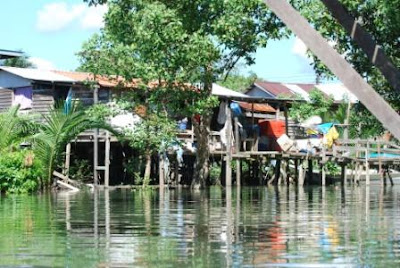














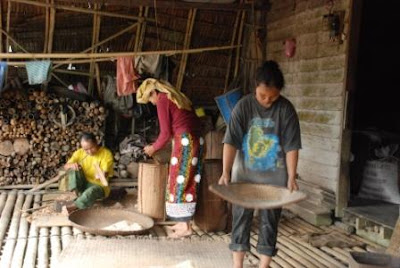




























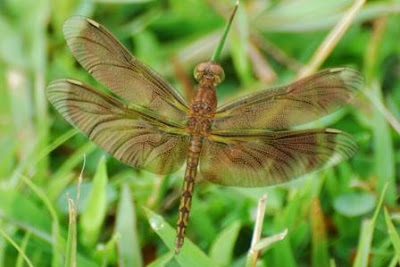








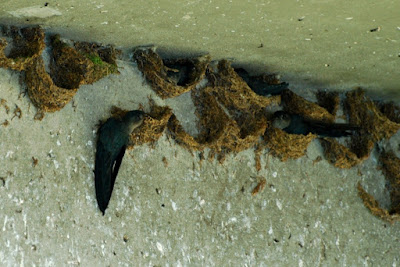








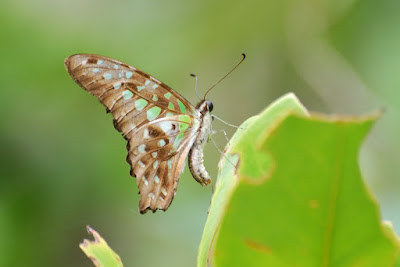






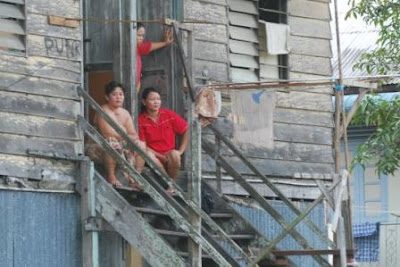





























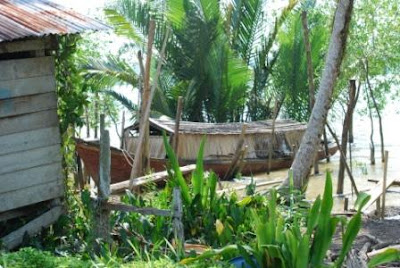




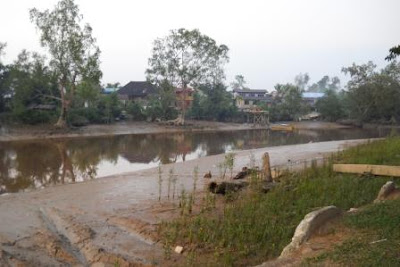


































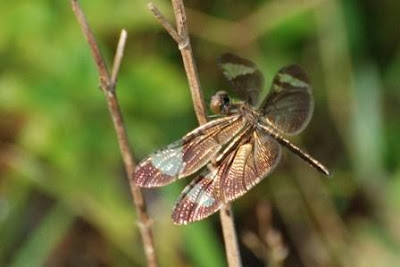






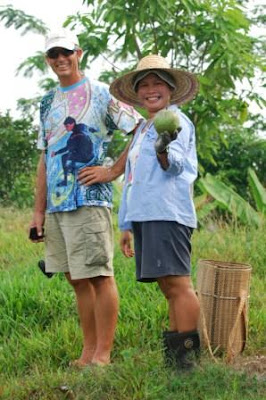


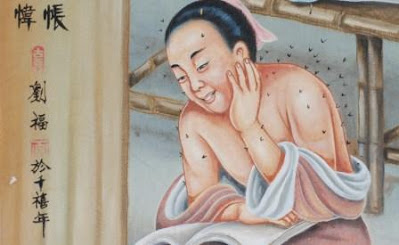









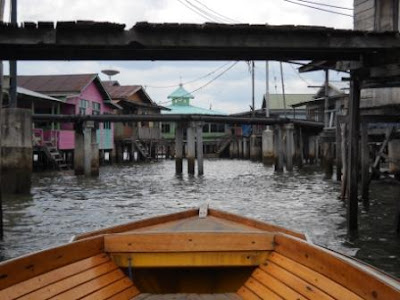
























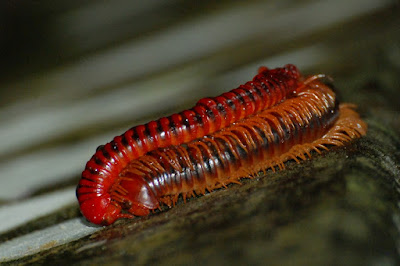





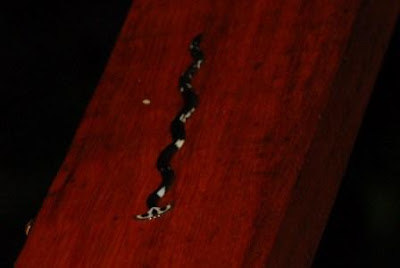













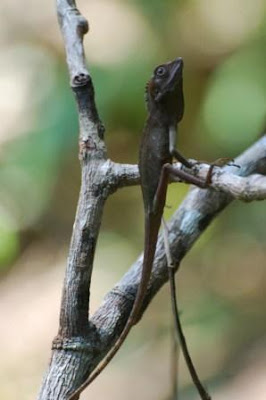
















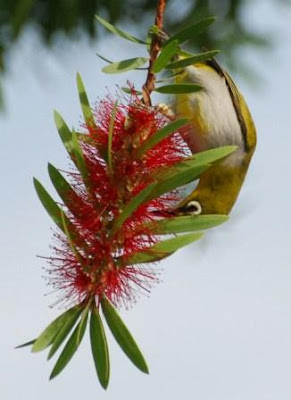









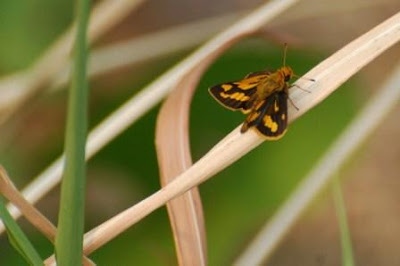








































No comments:
Post a Comment